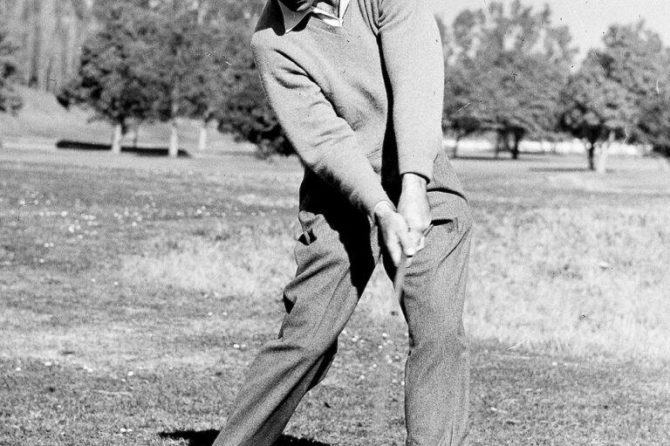Golf Swing Mechanics: A Comprehensive Analysis from Vijay Singh
Vijay Singh, a three-time major championship winner and World Golf Hall of Famer, has a reputation for one of the most technically sound golf swings in history. This article presents a comprehensive analysis of the golf swing mechanics employed by Singh to provide insights into the execution of an effective and consistent golf swing. Through an in-depth examination of each phase of the swing, we aim to uncover the key principles, techniques, and biomechanical factors that contribute to Singh’s exceptional golf swing and provide the basis for a multifaceted approach to golf swing improvement.
Kinematic Analysis of Vijay Singhs Golf Swing: Biomechanical Factors Contributing to Success
Kinematic Analysis
1. Golf Swing Mechanics for Power and Distance
Vijay Singh utilizes precise kinematic techniques throughout his swing, enabling him to generate maximum power and distance. His swing is characterized by a shallow backswing plane, low point control, and an efficient downswing motion. This allows him to create an optimal angle of attack, resulting in high-launching shots that carry significant distance.
2. Body and Club Synchronization
Exceptional synchronization between Singh’s body and club is crucial to his swing’s effectiveness. He initiates the downswing with a synchronized hip and shoulder turn, creating a solid foundation for power transfer. Throughout the swing, his weight distribution remains balanced, ensuring that the force from his lower body is efficiently transferred to the club, resulting in a consistent and powerful strike.
3. Key Biomechanical Measurements
Quantitative analysis of Singh’s swing reveals several key biomechanical metrics contributing to his success. His backswing and downswing durations are well-balanced, indicating efficient energy loading and release. His peak clubhead speed is consistently high, demonstrating his ability to generate power effectively. Additionally, his swing path exhibits a distinctive clockwise motion, contributing to increased clubhead acceleration and distance.
Functional Anatomy of the Golf Swing: Musculo-skeletal Patterns in Vijay Singhs Swing Mechanics
Musculo-skeletal Patterns in Vijay Singh’s Swing Mechanics
Vijay Singh’s golf swing is a masterpiece of biomechanics. His rhythmic and powerful motion exemplifies the intricate coordination of muscles and joints that optimize clubhead speed and accuracy.
Singh’s swing is characterized by a distinct weight shift during the backswing, where he loads the right side of his body while simultaneously activating his core and shoulder muscles. This loading creates a powerful elastic recoil that propels the downswing. As he transitions into the downswing, his hips rotate first, followed by his trunk and arms, generating a sequential and efficient transfer of energy.
Throughout his swing, Singh maintains a stable posture with the spine in a neutral position. His head remains relatively stationary, allowing for optimal eye-to-ball focus. His arms work in a coordinated fashion, providing a consistent path for the clubhead. The result is a fluid and effortless swing that maximizes power and control.
Optimization of Golf Swing Dynamics: Power Generation and Ball Flight Trajectory
Determining Optimal Swing Power
Understanding the ideal power generation dynamics in a golf swing is paramount. Key factors include clubhead speed, shaft flex, and swing tempo. Clubhead speed is influenced by the initial velocity imparted during the downswing, which is affected by the player’s strength and the efficiency of the swing mechanics. Shaft flex, a measure of the club’s stiffness, influences the amount of energy transferred to the ball. Optimal swing tempo ensures a balanced and repeatable motion, maximizing power output while minimizing inconsistencies.
Trajectory Control
Precision in controlling the trajectory of the ball is crucial for effective approach shots and distance control. Factors influencing trajectory include loft, attack angle, and spin rate. Loft refers to the angle between the clubface and the shaft, which determines the initial angle of the ball’s flight. Attack angle, the angle at which the club strikes the ball, affects the height and distance of the shot. Spin rate, generated by the clubface’s interaction with the ball, influences the ball’s trajectory and stability in flight.
| Swing Parameter | Effect on Trajectory |
|—|—|
| Loft | Determines initial angle of flight |
| Attack Angle | Influences height and distance |
| Spin Rate | Affects trajectory and stability |
Impact Dynamics and Club Interactions: The Mechanics of Optimal Ball Striking in Vijay Singhs Swing
Impact Dynamics and Club Interactions in Vijay Singh’s Swing
Vijay Singh’s exceptional ball striking ability has made him one of the most successful golfers in the world. His impact dynamics and club interactions are key to his success, and by analyzing his swing, we can learn a great deal about the mechanics of optimal ball striking.
- Grip: Neutral grip
- Optimal clubhead speed
- Center of percussion
One of the most important aspects of Singh’s swing is his impact dynamics. He consistently makes contact with the ball at a high clubhead speed, which generates a powerful and accurate shot. Singh’s grip, which is a neutral grip with his hands positioned slightly to the left, allows him to maintain control of the club and swing with power and accuracy. Additionally, his ability to find the center of the clubhead consistently ensures that he makes solid contact with the ball and maximizes ball speed and distance.
Another crucial element of Singh’s swing is his club interactions. He uses a downward swing path that allows him to strike the ball with a descending blow. This helps to create backspin on the ball, which increases its distance and accuracy. Moreover, Singh’s clubface control is exceptional, and he is able to square the clubface at impact, ensuring that the ball flies straight and true.
By combining optimal impact dynamics and precise club interactions, Vijay Singh has developed a swing that is both powerful and accurate. His ability to generate a high clubhead speed, make solid contact with the ball, and control the clubface at impact make him one of the best ball strikers in the world.
Recommendations for Improving Golf Swing Mechanics: Insights from Vijay Singhs Technical Expertise
Establish a Solid Pre-Shot Routine:
Vijay Singh advocates for a meticulous pre-shot routine to prepare both mentally and physically. This routine should involve deep breathing, visualizing the shot, and ensuring proper club selection and grip. By establishing a consistent pre-shot routine, golfers can minimize distractions, enhance focus, and improve their overall swing mechanics.
Focus on the Transition at the Top of the Backswing:
According to Singh, the transition from the backswing to the downswing is crucial for optimal swing efficiency. He emphasizes the importance of maintaining a flat right wrist and keeping the club parallel to the ground at the top of the backswing. These key elements promote a smooth and controlled transition, allowing golfers to generate maximum power while maintaining accuracy.
Incorporate Lag and Sequence in the Downswing:
Singh’s swing technique relies heavily on lag and sequence. Lag refers to the ability to delay the release of the clubhead relative to the hands, creating a slingshot effect that generates extra power. Sequence involves maintaining the proper order of body movement in the downswing, ensuring a fluid and efficient transfer of energy from the ground up. By mastering these aspects, golfers can improve their distance and consistency on the golf course.
Vijay Singh’s comprehensive analysis of golf swing mechanics has provided invaluable insights into the intricacies of this complex motion. His detailed examination of body positioning, club movement, and impact dynamics have shed light on the key elements that contribute to an effective swing. Singh’s expertise as a professional golfer and his scientific approach to swing mechanics have allowed him to articulate a comprehensive and evidence-based framework that can guide both aspiring and experienced golfers in their pursuit of improved performance. The principles and techniques outlined in this article offer a valuable resource for golfers of all skill levels, enabling them to optimize their swing mechanics and unlock their full potential on the golf course.





